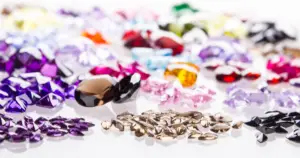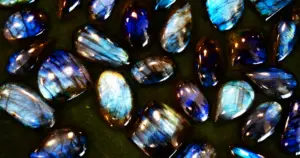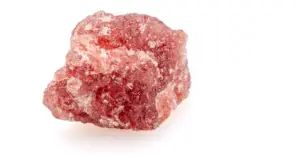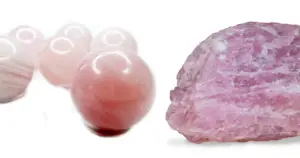Malachite Real vs Fake: Beware of Fake Malachites
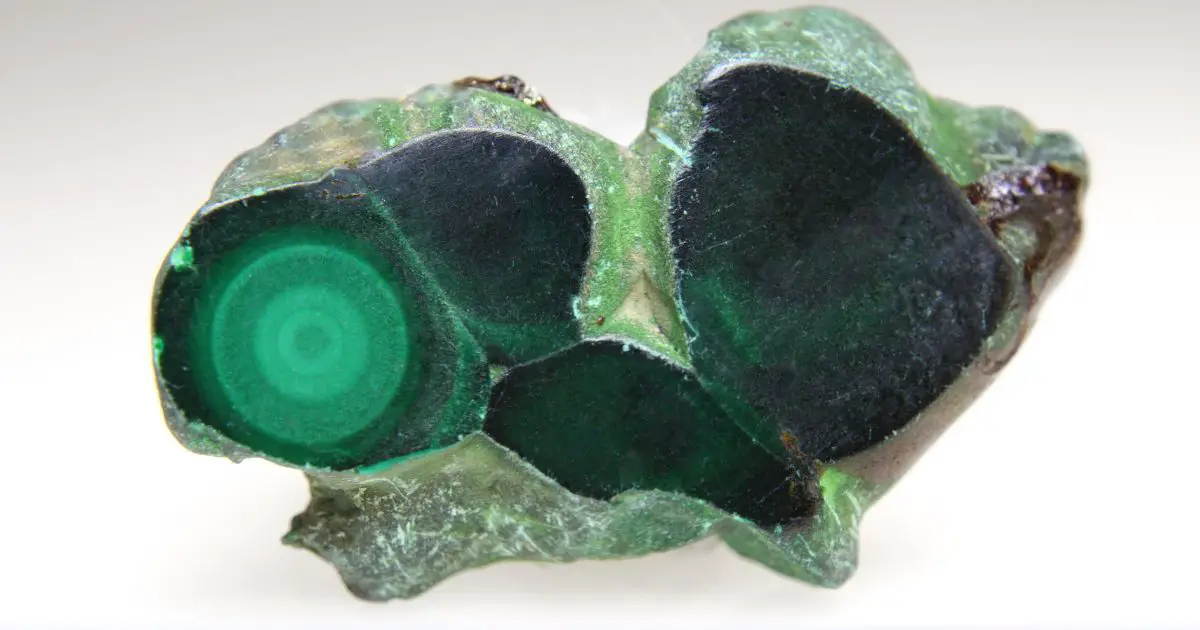
Malachite is among the most easily imitated crystals, and it can be difficult to tell which versions are genuine and which are forgeries at first. Many merchants call their jewelry or crystals “natural,” although they are actually selling synthetic Malachite. This isn’t limited to Wish or eBay; it’s also common on more credible sites like Etsy, your neighborhood crystal and holistic stores, and even large-name spiritual stores in the US.
Let’s learn Malachite real vs fake points in this blog.
Table of Contents
What is Malachite Crystal?
Malachite is a mineral composed of copper carbonate hydroxide with the composition Cu2CO3(OH)2. This transparent, green-banded stone crystallizes in the monoclinic crystalline phase, and the most common forms are botryoidal, fibrous, or stalagmitic aggregates in fractures and deep in the earth areas where the water table and geothermal fluids allow chemical precipitation.
Solitary crystals are uncommon, however narrow to acicular prisms do exist. Pseudomorphs from following more tabular or boxy azurite crystals. Colored gemstones have long been recognized for their extraordinary characteristics and benefits. The amazing and one-of-a-kind Malachite gemstone has wonderful healing powers.
Malachite is a gorgeous green gemstone with green peacock feather markings on its surface. It has a vitreous shine and is extremely durable. Malachite, often known as the stone of protection, is renowned for its extraordinary physical, metaphysical, and healing capabilities.
Read here to learn all about Malachite.
Malachite Real vs Fake
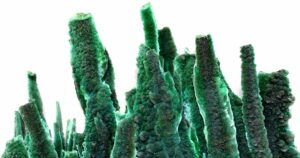
Genuine Malachite forms in weathered Copper concentrations, however, counterfeit Malachite can be produced from plastic, glass, or even polymeric clay. To disguise it as something finer, phony Malachite is frequently described as ‘imitation, “manmade,’ or perhaps even ‘faux.’ These are all true.
The first thing to consider is the pricing. True Malachite is not cheap, but artificial or reconstituted forms are. This isn’t always the case, but it’s a decent starting point. The colors and patterns are the next identifiers. Real Malachite has a beautiful array of swirls, ripples, rings, and stripes, however, imitation ones prefer to adhere to stripes because they are the simplest to achieve.
The colors in genuine Malachite range from gentle, light, and pastel greens to very lush greens. Synthetic Malachite is frequently medium green and black in color, with a sharp contrast between the patterns. They are also much more uniform, whereas genuine Malachites will not have a recurring pattern.
Another way to identify genuine Malachite is that it is a hefty crystal with a high copper concentration that is thicker than glass and chilly to the touch. Because many Malachite imitations are made of plastic or clay, they are substantially lighter than genuine Malachite. Another to be wary of is the reconstructed Malachite, which is a hybrid of real and synthetic Malachite.
It is made by combining crushed Malachite offcuts or trash with colors or glue to form it back into shape. Because of the resin composition, it is lighter than conventional Malachite, and while the colors appear more natural, the patterns are often too consistent, and just don’t look right. These are all cases of false Malachite being marketed as natural or simply being mislabeled on Etsy and the internet.
Malachite Real vs Fake: What does real malachite look like?
The colors in genuine Malachite range from gentle, light, and pastel greens to very dark greens. Synthetic Malachite is frequently medium green and black in color, with a sharp contrast between the patterns. They are also much more uniform, whereas genuine Malachites will not have a recurring pattern.
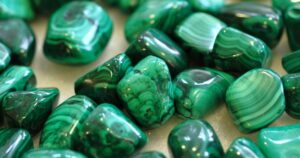
Malachite Real vs Fake: How to tell real malachite from fake malachite?
Simulated Malachite items, like all famous stones, are available in the marketplace, particularly on the internet. Sometimes a jewelry item is advertised as “simulated,” but it is in extremely small print, hidden someplace in a description. Other terms that may be used include “faux,” “imitation,” and “man-made.” Sometimes merchants would try to pass off fakes as genuine. And occasionally, a vendor is deceived or misguided. Here are some indicators that Malachite is genuine:
- It’s cold
- It’s heavy.
- It’s hard.
- It is thicker than actual glass or plastic,
- when handled and touched, it feels ‘dense’ and frigid.
- The striped patterns, known as “banding,” are not uniform in their patterns and hues. The patterns include circles and thin to thick portions, as well as dark to mid-green tones.
- Malachite is frequently hand-cut and hand-polished. The size and shape of the beads vary. Sometimes you could see the cut and cleaning marks on the Malachite.
- Genuine malachite is not inexpensive! If you encounter malachite strands for a few bucks, they are not genuine.
- If you look attentively at genuine Malachite, you may notice tiny crystals.
- Because Malachite is a soft mineral, some authentic Malachite jewelry is wax-treated for increased durability.
To know about the various benefits of real malachite, read here.
Malachite Real vs Fake: Identifying Fake malachite and its several types
There are false Malachite “trade names” that are dead giveaways. Blue malachite, green malachite, siliceous malachite, and metallic malachite are examples. The plastic imitation malachite is light and pleasant to the touch. If you touched it with a heated needle, it would melt, and you could smell the burning plastic.
Glass imitation malachite is icy to the touch, just like genuine malachite, but because it’s glassy, it warms up considerably faster in your hand. Beads made of glass malachite are popular. There are polymeric clay fakes as well, with how-to videos available online—-this appears to be bluer and quite phony.
Similar to restored turquoise, reprocessed or rebuilt malachite is created from crushed remains of the gemstone blended with colors and resins. Exaggerated, typically jagged banded patterns, regular stripes, and artificial green tints distinguish reprocessed malachite; it also tends to feel lighter. It can be bluer at times.
Watch this to know more about Malachite:
Conclusion
Malachite provides powerful health advantages in addition to its physical and therapeutic properties. It is used to treat cold sweats, influenza, and Parkinson’s disease. It also aids in the treatment of asthma, digestive issues, and rheumatic discomfort. Malachite crystal helps those who forget people’s names shortly after hearing them by strengthening their memory.
The green tint of Malachite gemstone reveals intense energy rays that give the wearer a calming sensation and is known to treat seizures, travel sickness, vertigo, and reduce blood pressure. Malachite crystal helps to mend fractures, inflamed joints, tumors, strained muscles, and fractured bones. It encourages the liver to discharge toxins and boosts the wearer’s immune function.
